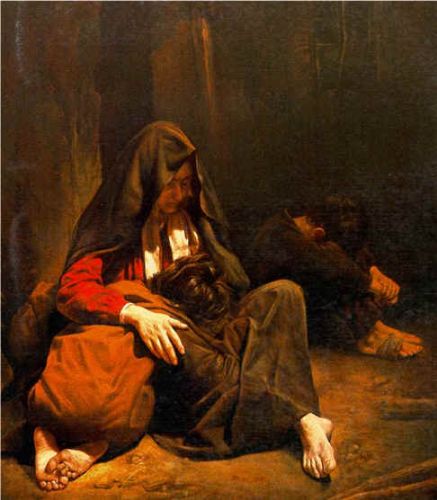Simon: God and caring for the homeless
 As part of a Los Angeles Times series on homelessness, faith and values reporter Stephanie Simon spent some time in Denver looking at a government program that involves a Democratic mayor and a challenge to the area's churches, synagogues and mosques to work with the 600 or so homeless families in the community in a mentorship program begun two years ago. The Denver program has fascinating aspects from social, economic, governmental and religious perspectives. The religious involvement in the program as portrayed by Simon is almost incidental. The two mentors portrayed in the long and thorough story happen to go to "the same evangelical church in the upper-middle-class suburb of Parker" and both were prompted to work in the program for more or less religious reasons:
As part of a Los Angeles Times series on homelessness, faith and values reporter Stephanie Simon spent some time in Denver looking at a government program that involves a Democratic mayor and a challenge to the area's churches, synagogues and mosques to work with the 600 or so homeless families in the community in a mentorship program begun two years ago. The Denver program has fascinating aspects from social, economic, governmental and religious perspectives. The religious involvement in the program as portrayed by Simon is almost incidental. The two mentors portrayed in the long and thorough story happen to go to "the same evangelical church in the upper-middle-class suburb of Parker" and both were prompted to work in the program for more or less religious reasons:
Dave, 36, volunteered thinking of Jesus' commandment to help the poor.
Mark's motives were more complicated. He had long viewed the homeless as unworthy of his time: "I thought it was their own damn fault."
Then one night, he joined his church to serve meals at a soup kitchen. He watched the ragged families and wondered what kept them from a normal life. "God was telling me, 'Check this out a little more,'" said Mark, 40. ...
The family spent several months in shelters -- each week a different church basement, a different set of eyes judging them.
The story is not explicitly about religion, but religion drips from the paragraphs. Simon is clearly sensitive to religious issues, as we have said here before. She is able to bring out many things that a less perceptive reporter might have otherwise dismissed. Much of it stems from the various sets of values that are present in the story. The middle-class suburban lifestyle is not particularly religious, but it certainly informs a person's religious perspective.
Take, for instance, the following paragraphs:
His tolerance had limits. In his final report, Mark would give Joe and Christina only an average chance of becoming self-sufficient. He would also recommend letting future families join the program only if both adults were willing to work. But asked how the experience affected him, he checked the box marked "positive."
Over the summer, Mark and his wife had faced an unexpected opportunity to adopt two young girls from foster care. Mark knew taking in the girls would leave them living nearly paycheck to paycheck. But he thought of Christina and Joe, and he said yes.
As a religious issue, the concept of both parents working is hardly mentioned in the Bible, but Mark's values are informing his judgment that both parents should work to provide income. Simon doesn't pass judgment on any of that, but simply passes the information along and allows readers to come to their own conclusions.
Overall this is a great piece of reporting that must have involved several trips to Denver over a period of time lasting at least a year. The story's breadth and depth is satisfyingly thorough and Simon's choice of quotes and anecdotes reflects a tremendous understanding for the values, separate and shared, across multiple communities.